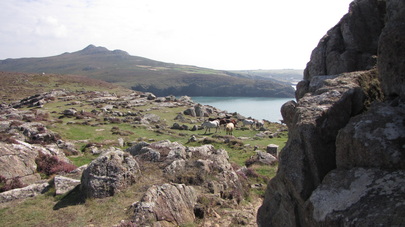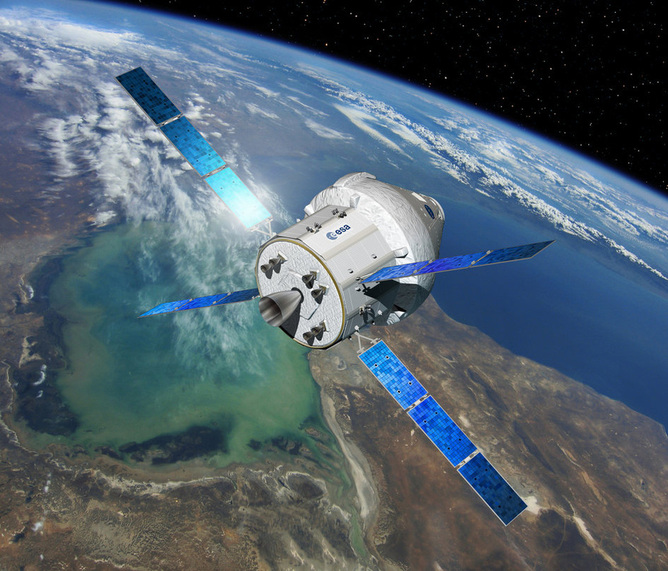 Walking the Pembrokeshire Coastal path (SW Wales, UK).
Walking the Pembrokeshire Coastal path (SW Wales, UK). A combination of circumstances have inhibited my blogging activity - a hardware problem with my laptop in August followed by a couple of holidays in September. I am hoping to make up for the deficit in the coming days, but let me say something about my recent holidays - bear with me - it does have some relevance to 'space'.
In early September we took a break, walking the beautiful coastal path around Pembrokeshire in SW Wales. The picture above shows a section of the route near St David's Head. It was sensational weather for this part of the world, with beautiful settled sunny weather every day during our week's break. Since I am quite fair skinned I definitely had to take precautions not to burn while out all day in the sun, and this included wearing a sunhat. The only one I had was a NASA baseball cap given to me by an American friend who was visiting the Ames Research Centre in the US. So as my wife and I were taking a rest and some food, another couple wandered by. The gentleman, clearly american, asked about the NASA cap and we struck up a conversation. Turns out he worked for NASA as a rocket engineer, being responsible for the Space Shuttle Orbital Manoeuvring System (OMS) engine before the shuttle's retirement in 2011.
 The other holiday break was to the N Devonshire coast, near Lynton UK.
The other holiday break was to the N Devonshire coast, near Lynton UK.  The proposed US manned spacecraft Orion. The crewed capsule is supported by the Service Module adapted from the European ATV, and propelled by the proven technology of the Shuttle OMS engine.
The proposed US manned spacecraft Orion. The crewed capsule is supported by the Service Module adapted from the European ATV, and propelled by the proven technology of the Shuttle OMS engine. The collaboration between the USA and Russia has been a very healthy one over the years, especially with the establishment of the ISS. However, this relationship is not just a collaboration - the USA also depends upon Russian space technology in other ways. For example, the USAF launches classifed payloads (intelligence spacecraft) using Atlas V launch vehicles, which are powered by Russian RD 180 rocket engines. At the moment there are around 15 of these Russian engines in the american stockpile, and if Russia places an embargo on their future export there could be a few red faces in the US Intelligence Agencies. Curiously, the US needs Russian technology to spy on Russia!
Time for the Obama Administration to wake up I think, and implement a space strategy that actually makes sense.
 RSS Feed
RSS Feed
